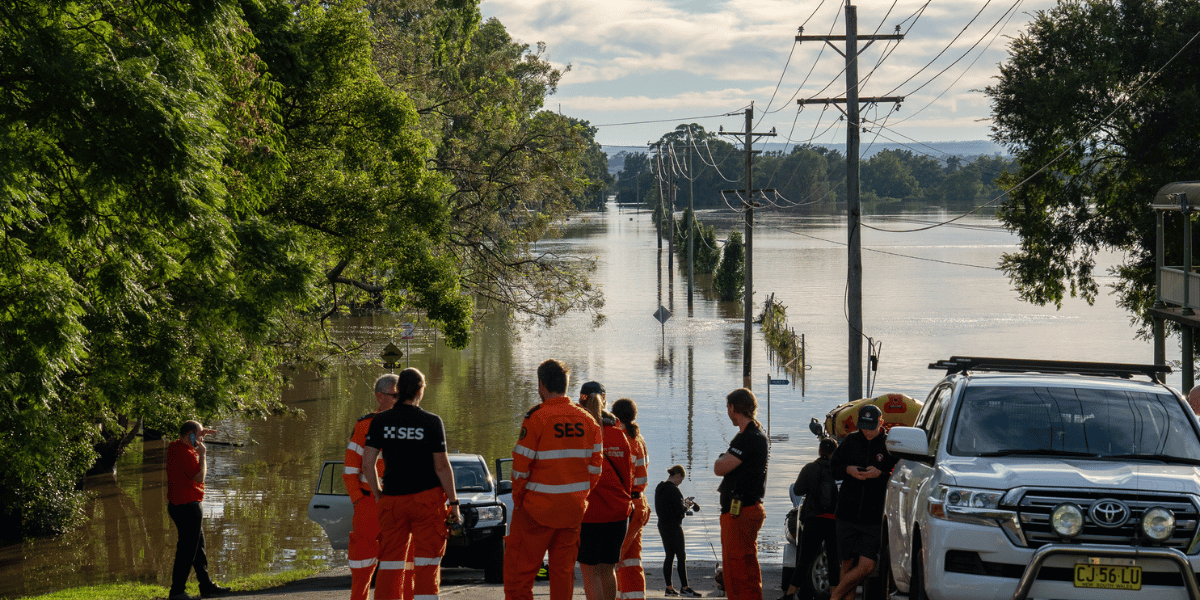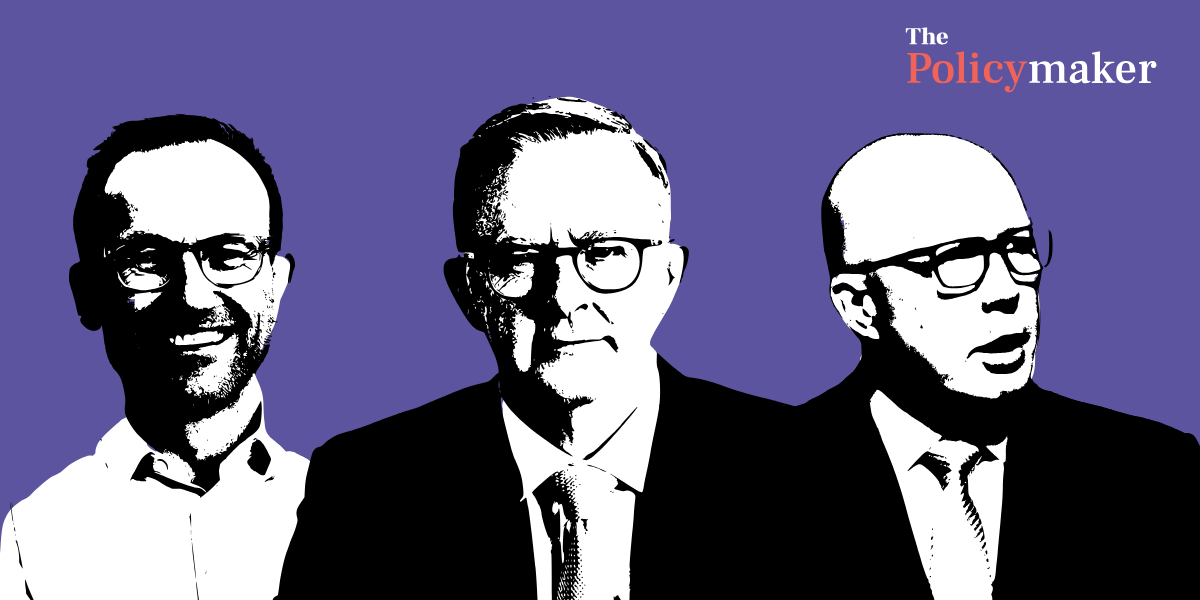31 October 2023
While Australia continues to experience more frequent and severe disasters, investment in physical as well as social infrastructure is key to achieving whole-of-society disaster resilience. Better outcomes can be achieved if government and wrap-around services work with communities to support long-term resilience by investing in social infrastructure, as well as in the built environment.
In the last four years, Australia experienced some of the costliest and most disruptive disasters in its recent history, including the 2019-20 Black Summer Bushfires and the 2022 east coast floods. These events cost the Australian economy $100 billion and $5 billion, respectively. In many instances, local recovery was exacerbated by the disruption of the pandemic and restrictions on social gatherings.
Policy development and government spending on disaster risk reduction over this period paints a picture of resources being narrowly directed toward disaster mitigation and emergency response – and less on community recovery and preparedness. Doubtless, investment in mitigation and response protects against disaster, with the federal government reporting that every $1 spent on disaster risk reduction saves $15 in disaster recovery. Yet, while governments at all levels proactively manage disaster onset and fallout, a question remains over how well-targeted this investment is for achieving whole-of-society disaster resilience.
Spending lessons from abroad
In Japan, a country notable for its experience of disasters, including the 2011 triple disaster (earthquake, tsunami and nuclear meltdown), almost US$200 billion set aside for disaster mitigation and recovery was funnelled into improving physical infrastructure. This included the construction of sea walls in Tsunami prone areas. Less was invested to enhance community capacity, despite this being a key factor found to determine which communities fared better long term.
Japan’s experience highlights what political scientist Daniel Aldrich calls an investment focus on “concrete” infrastructure (i.e., housing, roads, powerlines, footpaths, bridges, etc.). Important as these are, they are often prioritised over social infrastructure (i.e., a community’s social networks and the places that nurture these, such as parks and green spaces, schools, places of worship, cafes, pubs and clubs). Social infrastructure are underappreciated assets for nurturing social networks in times of need.
These networks are what people rely on for information and to make decisions about disaster preparation and evacuation. It is the same networks people turn to for their recovery, with research linking social network participation after disaster with a person’s overall wellbeing and recovery.
In Australia, there are funding schemes made available by federal and state disaster agencies aimed at enhancing social infrastructure. In many instances, though, these funds are used to address what public health researchers term “the social costs of disasters”, including mental health impacts, domestic violence, inequality and chronic illness. Investment in social infrastructure, such as strong networks and local skills and capacities as disaster protective mechanisms, currently lags behind.
A more community-oriented approach
One reason is that disaster agencies, such as the NSW Reconstruction Authority, are mandated to focus resources on the first 100 days after disaster. When short timeframes like this are in play – and fall within election cycles – it is little wonder that ribbon-cutting concrete infrastructure projects are prioritised. For this reason, the repair of roads, powerlines and footpaths on streets with shuttered businesses and closed social hubs is a scene common to many communities post-disaster.
NGOs and other wrap around supports are often viewed as playing a role in supporting communities, with organisations such as the Red Cross raising $55.6 million for immediate and long-term recovery and providing cash assistance in the 12 months after the 2022 east coast floods.
When social infrastructure is actually considered, it is used in models measuring community resilience, seen for example in the Bushfire and Natural Hazards Research Australia’s Disaster Resilience Index. It scores and applies to a broader set of factors a community’s social capital, character and levels of social engagement, when measuring coping and adaptive capacity.
This and other models can influence where funding is spent or how physical infrastructure is developed and according to what timelines. So, while social infrastructure does figure into policy thinking, it is part of a set of indicators broadly about “resilience” that is viewed from top-down.
The quantification and ranking of a region’s coping and adaptive capacity is cold comfort for communities who experienced the worst of recent bushfires and floods. When you’ve lost everything, what use is a score derived from top-down assessments of adaption and capacity?
The case for community-oriented disaster risk reduction policy
When disaster risk reduction is community-oriented, it can become part of the normal functioning of regional areas and emergency management, both outside of disasters and in the lead up to them.
Influenced by lessons from humanitarian aid and community development, community-oriented disaster risk reduction aims to firmly plant community networks and perspectives into how natural hazards are managed locally. This approach is consistent with the UN’s Sustainable Development Goal 11 of making cities and human settlements inclusive, safe, resilient and sustainable. Further, it endorses recommendation 22.4 of the Royal Commission into National Natural Disaster Arrangements:
Self-mobilised community responses, providing a sense of purpose and essential relief, have increasingly become part of the recovery system. Ensuring that these responses are established safely and in a coordinated way will enhance recovery processes for future disasters and strengthen resilience of communities.
Policy reform can be achieved through government at all levels working directly with communities to foster inclusivity, nurture social infrastructure and mobilise local networks and capacities.
A collaborative project of the James Martin Institute for Public Policy (JMI) with the NSW Government found that school communities in regional, rural and remote areas can play an instrumental role in disaster management.
This is premised on nurturing the links between schools and local communities in periods outside of calamity. It ensures strong bonds can be relied on to mobilise community-oriented initiatives that contribute to disaster mitigation, preparedness, response and recovery. A strong town is a strong school, and vice versa.
Elsewhere, in our research at UNSW, we explored how grassroots initiatives can be supported in NSW regional areas affected by the Black Summer Bushfires. Residents identified and then voted on what was important locally for enhancing their disaster resilience. They identified the importance of upgrading community halls for holding regular meetings and the utility in creating an emergency phone tree with contact details, addresses (especially for isolated people) and the skills residents possess that are useful in a disaster. Research participants also identified the importance of having disaster management plans written by the community for the community, and training opportunities for upskilling to ensure that community members have relevant skills to contribute meaningfully.
The way forward
These practical examples speak to the need for continued policy work that enables government and non-government actors to support and champion grassroots ideas for disaster resilience, in concert with emergency managers. Well-maintained social infrastructure, for instance, where people can meet and socialise, local phone trees, management plans, and training opportunities highlight how local networks can be nurtured and leveraged so communities are ready to deal with disruptions.
This requires sound investment in social infrastructure as much as it does physical infrastructure, with community-oriented approaches to disaster management key to whole-of-society resilience.
A core milestone to achieving reform is locating the linkages between policymakers and community social infrastructure and individual residents. JMI’s project with the NSW Education Department demonstrates how this can be done. Public infrastructure — such as schools — in regional, rural and remote areas resemble a useful contact point. In many towns, schools remain the only public facing government institutions, and have long-lasting and deep connections into their local communities and social networks. Nurturing these to enhance community connectivity and community-oriented disaster awareness and education holds tremendous promise, be it through investment in new or existing social infrastructure.
Other areas of focus could include locating similar linkages between, for example, Multicultural NSW or Department of Communities and Justice and the social infrastructures and communities their portfolios serve. Investing in these linkages ensures a diverse approach can be taken to supporting whole-of-society resilience — going beyond schools to also engage with CALD communities and regional localities, among many others.
While Australia continues to experience more frequent and severe disasters, and unprecedented government funding is used to curb and address these, investment in social infrastructure in tandem with physical infrastructure remains important for ensuring disaster management is locally oriented. This is one of the best approaches to building whole-of-society resilience.
Timothy Heffernan is a postdoctoral fellow at HowWeSurvive, UNSW School of Built Environment. His research focuses on supporting community-oriented approaches to disaster management and better understanding the experience of event-based hardship and recovery to build resilient futures.
Research with NSW regional communities was supported by the NSW Government.
Image credit: Chad Ajamian, Getty Images
Features
Libby Hackett, Jordan Ward, Jack Isherwood, Bonnie Bley, Hannah Lobb, Isabella Whealing and Hugh Piper
Subscribe to The Policymaker
Explore more articles
Libby Hackett, Jordan Ward, Jack Isherwood, Bonnie Bley, Hannah Lobb, Isabella Whealing and Hugh Piper
Features
George (Kev) Dertadian
Explore more articles
Libby Hackett, Jordan Ward, Jack Isherwood, Bonnie Bley, Hannah Lobb, Isabella Whealing and Hugh Piper
Subscribe to The Policymaker








